GUTENBERG’S PRINTING PRESS
Printing has a very long, but a remarkable history of innovation and renovations that have made the process much more convenient and efficient today. Historically, the Chinese started the art of printing around 800 AD using wood blocks; however, the advent of new printing technology was seen in 1440, courtesy of Johann Gutenberg’s invention of movable-type printing (Gutenberg printing press).
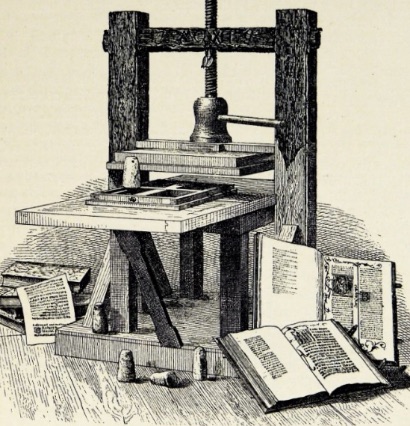
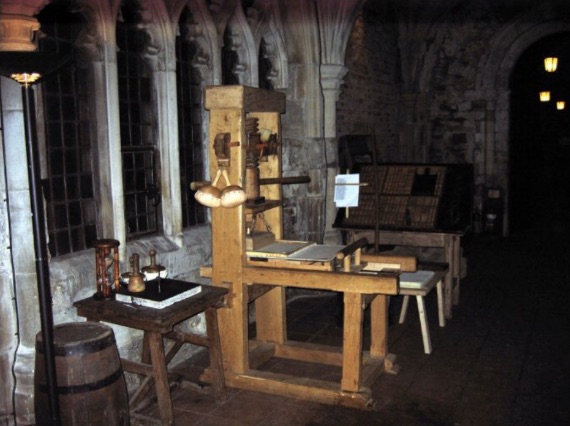
Gutenberg’s first printing press, 2019, Roos.
A replica of Gutenberg’s press, with a wooden screw and crank to drop the platen; n.d.; Gutenberg Museum Mainz and University of Göttingen.
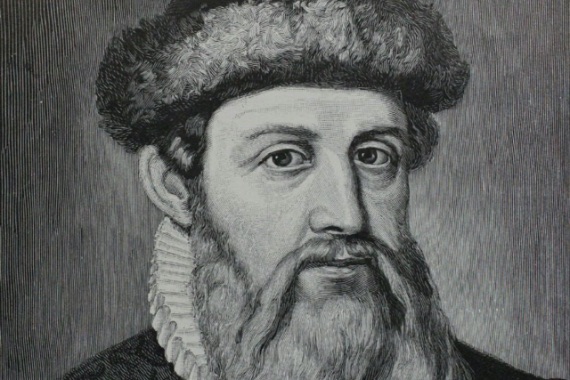
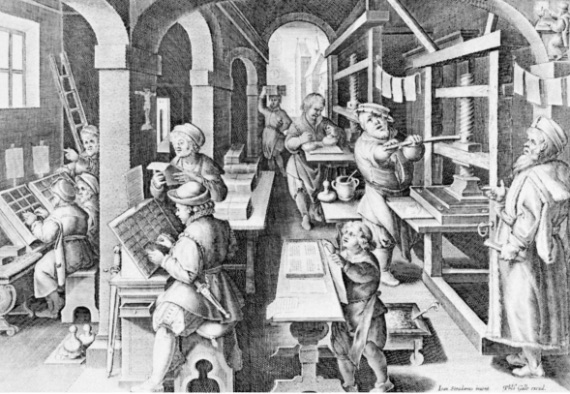
A portrait of Johannes Gutenberg, the inventor of Gutenberg printing press, 2015, Campaign.
Impressio Librorum (Book Printing), an engraving plate of book printing process, 1550, Encyclopaedia Britannica.
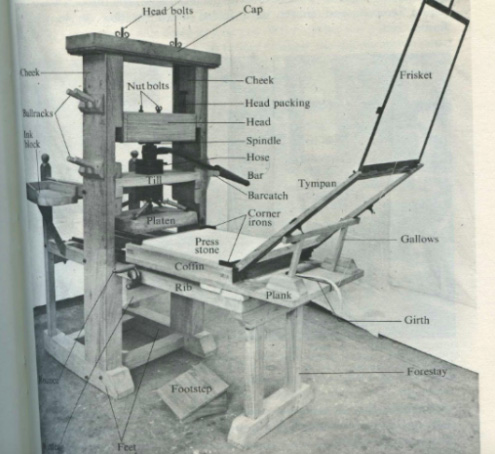
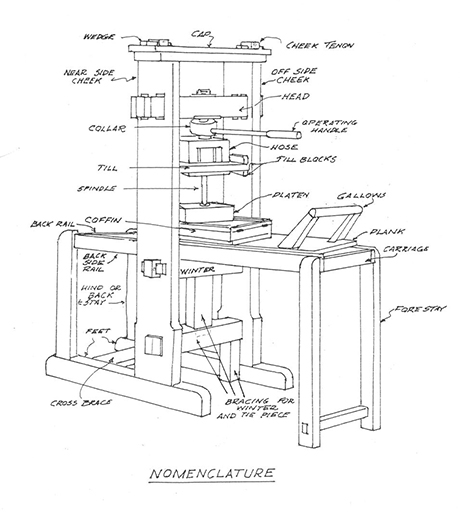
The parts of Gutenberg printing press, 2017, Wattpad.
Nomenclature is a set of terms used to describe the parts of the printing press, n.d., Martin Luther College.

Illustration of a printing press and a composing stick from the first edition (1768–71) of the Encyclopædia Britannica, n.d., Encyclopaedia Britannica.
Edited clip from Gutenberg Printing Press: Passages Exhibit; 2014; Explore Passages.
Gutenberg broke down the blocks into upper- and lower-case letters and punctuation markers and made them out of metals, like lead and tin, to make them lighter. He also created an ink from soot and linseed oil(Schwab et al. 1983).
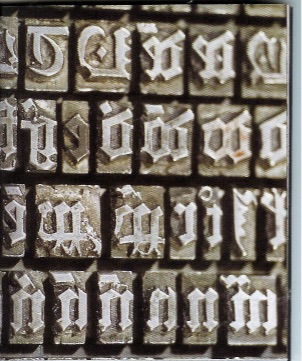
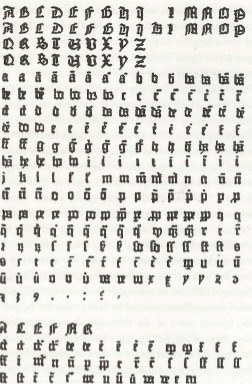
Reproduction of The Gutenberg Bible typeface, n.d., Christie.
A partial font-reproduction that was used in the production of Gutenberg’s FIrst Bible, n.d., Christie.
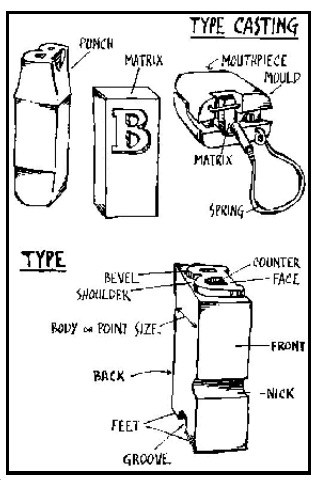
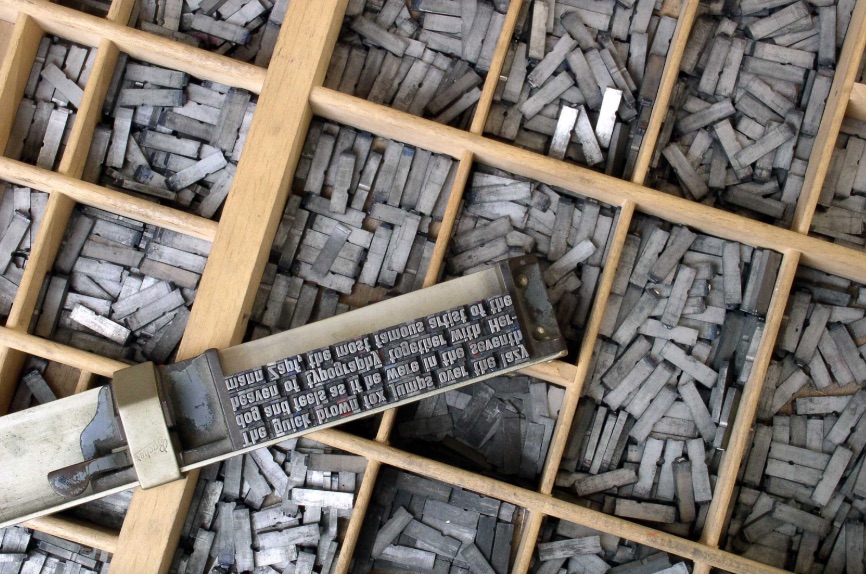
An illustration of the movable type componenet, 1997, Clement.
Movable metal types, 2017, Wolf.
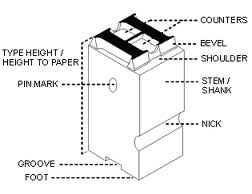
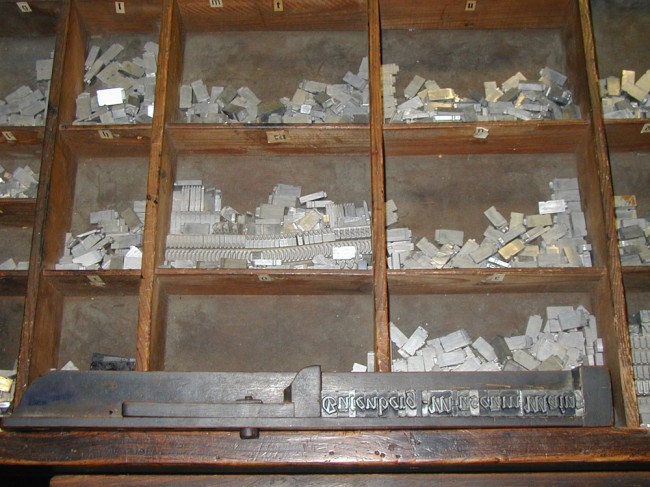
Diagram of a modern piece of metal type, n.d., Gutenberg's Apprentice.
A case of type with the words ‘Gutenberg-Museum Mainz’ set in a large font of italic, resting upside-down and backward in a wooden type stick, n.d., Gutenberg Museum.
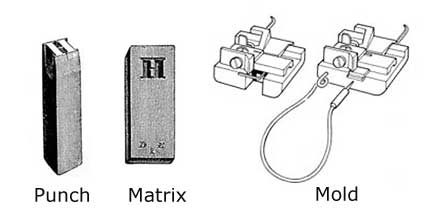
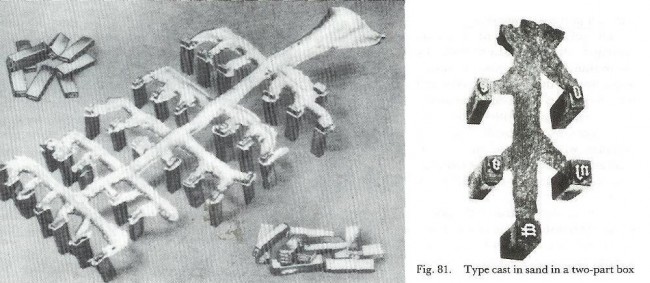
Punch and Matrix form De Vinne’s Plain Printing Types, n.d., Graphic Design History.
Reproduced from Kapr, Johann Gutenberg: the Man and his Invention (left) and Usher, A History of Mechanical Inventions (right); n.d.; Gutenberg's Apprentice.
The other distinguishing invention that set Gutenberg’s press apart from Asian developments in the past was that he used a mechanism to transfer ink from the moveable type (tin letter stamps) to the paper. He used the screw mechanisms also used other presses, like wine, linen, and paper presses (Howard 2005). It allowed the work to happen in an assembly line style, which is how books could be printed so much faster.
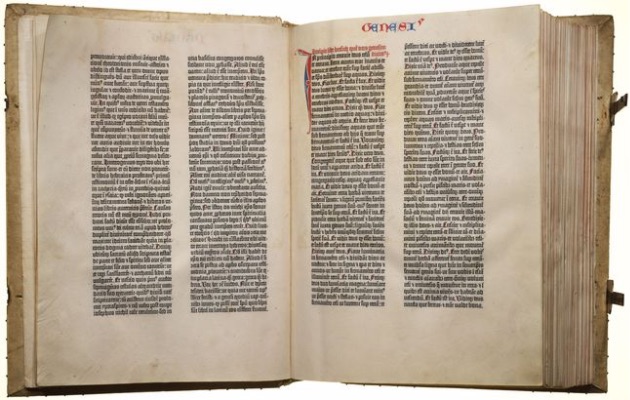
The photography of the first Gutenberg Bible, 2014, National Geographic Society.
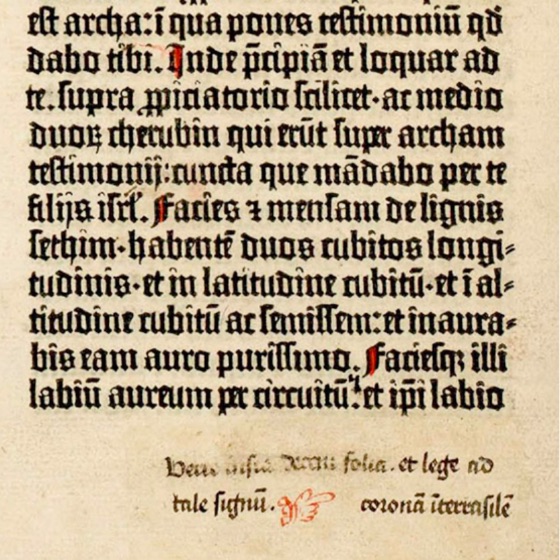
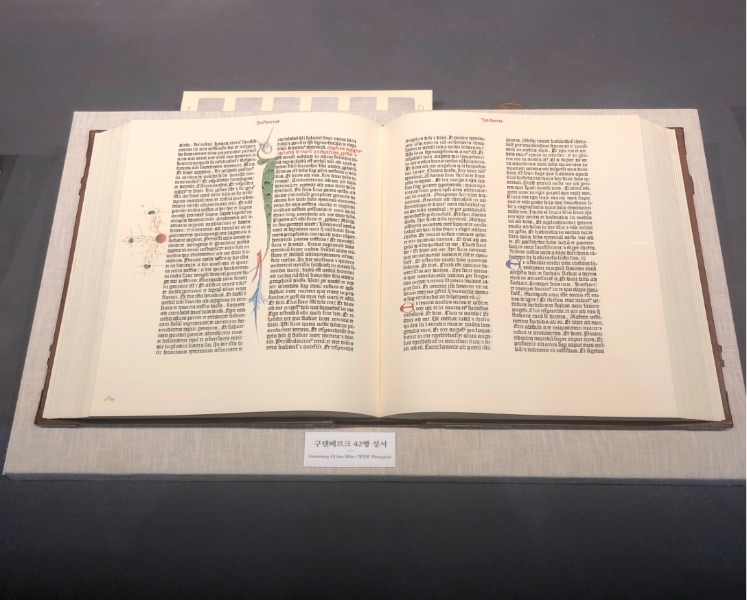
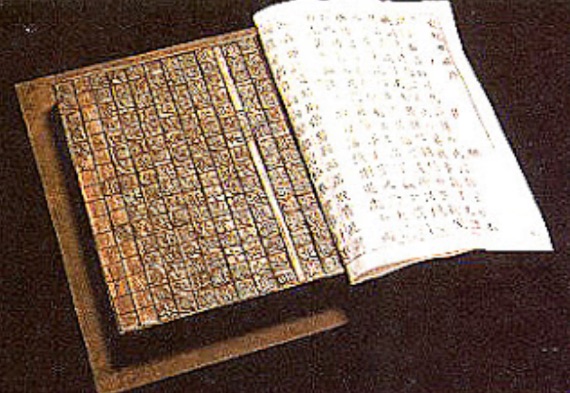
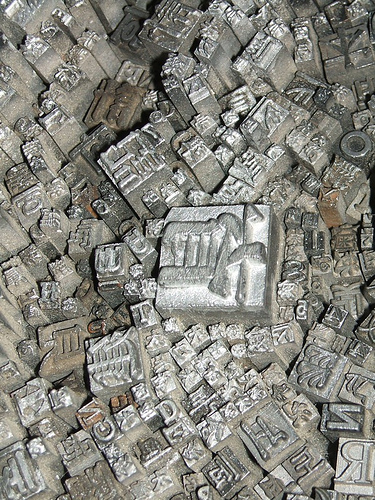
Chinese printing press, n.d., MI Printing.
Metal type set used to create the Jikji, from the Jikji Museum of Printing; n.d.; Cheongju Early Printing Museum.
The book that changed the world, 2010, History.com.